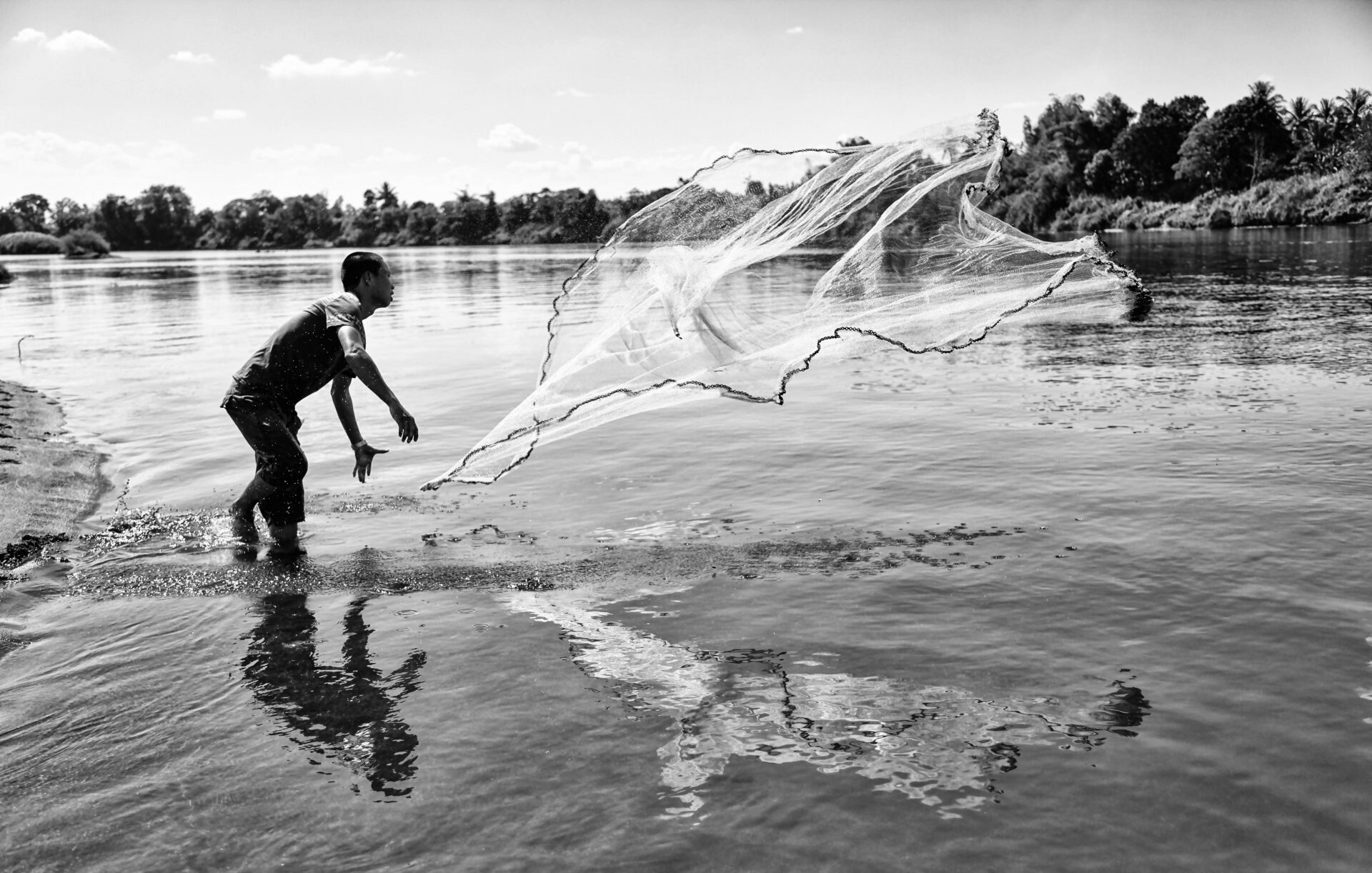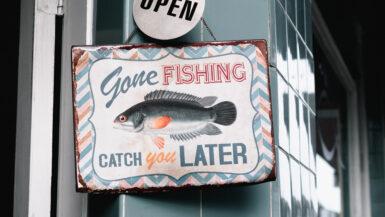Fishing is a great way to spend time in the outdoors and to get some delicious food to boot. Trout are a popular target for freshwater anglers, and large rivers can be a great place to catch them. But, fishing for trout in large rivers can be a challenging endeavor. To help you get the most out of your fishing experience and bring home dinner, here are some tips on how to fish for trout in large rivers.
What Gear You Need
When you are planning to fish for trout in large rivers, it’s important to have the right equipment. Not only will it make your fishing experience more enjoyable, but it will also increase your chances of catching more trout. Here’s what gear you need to get started.
Rod and Reel Combo
When choosing a rod and reel combo for fishing for trout in a large river, it’s important to look for a rod that is light and sensitive. You will also want to make sure the reel is designed specifically for trout fishing. It is also important to choose a rod and reel combo that is the right length and weight for your body type.
Baits and Lures
When fishing for trout, you will need to have a variety of bait and lures. Some of the best baits for trout include worms, maggots, and small pieces of cheese. For lures, you should have spinners, spoons, crankbaits, jigs, and other small lures. Experiment with different baits and lures to figure out which ones work best in different parts of the river.
Fishing Line
Choosing the right fishing line is also important when fishing for trout in large rivers. Monofilament line is light and durable, and is a great choice for trout fishing as it is easy to cast. Fluorocarbon line is also a good choice as it is less visible in the water, which makes it easier to fool trout.
Hooks and Weights
When fishing for trout, you will need a variety of hooks and weights. For hooks, use a size 6, 8, or 10. For weights, you can use split shot, egg sinkers, or lead-head jigs. Be sure to use the appropriate weight for your bait or lure.
Clothing and Accessories
When fishing for trout in large rivers, it’s important to wear the right clothing and accessories. You should wear waterproof pants and a waterproof jacket, as well as gloves and a hat. Sunglasses and polarized sunglasses are also essential to help you spot trout in the water. Finally, don’t forget to bring sunscreen, bug spray, and a first aid kit.
As long as you have the right gear and the right technique, you should be able to catch lots of trout in large rivers. With the right preparation and the right gear, you can have a successful and enjoyable trout fishing experience.
Types of Trout and Preferred Bait
Trout are one of the most popular freshwater game fish in the world and there are many varieties of trout found in large rivers. The most common types of trout are rainbow trout, brown trout, cutthroat trout, and brook trout. Rainbow trout are highly adaptable and can be found in many different habitats. Brown trout have a high tolerance for cold water and can live in colder climates. Cutthroat trout are found mostly in western North America and are marked by the red slash on their throats. Brook trout are also widespread and can be found in almost every U.S. state.
Ideal River Conditions for Trout
For an ideal fishing experience for trout, look for rivers and streams that are between 55 and 65 degrees Fahrenheit during the spring and summer months. Trout also prefer river bottoms with gravel and stones, as this provides cover from predators and an ideal environment for bugs and larvae, which are the main source of food for trout.
The Best Trout Bait
The best bait to use while fishing for trout in large rivers are artificial lures, and live or natural bait. Artificial lures such as spinners, crankbaits and spoons all work well for trout. Live bait such as worms and bugs are also very effective. Natural bait such as corn, salmon eggs, shrimp, and cheese all make great trout bait. For the most success, the bait should be fished close to the bottom of the river.
Tips and Tricks for Catching Trout
Trout can be difficult to catch, but with the right technique, you can land a trophy trout. To increase your chances of success, try fishing early in the morning or late in the evening, when the trout are most active. Trout are also attracted to light, so try fishing in areas with some natural light, such as near bridges or shorelines. Finally, don’t forget to use the right tackle, as the right line and rod can make a big difference in your success.
Location and Seasonal Considerations
Large rivers often host a variety of species, and trout are often a part of the mix. Selecting the right location can be the key to successful trout fishing. Trout prefer cold, deep pools and slow-moving riffles in rivers, so it’s important to scout a potential fishing spot and look for these types of areas. If possible, find a spot where the current isn’t too strong, as that can make casting difficult.
Best Time for Trout Fishing
Fish tend to be most active when the water temperature is between 50 and 65 degrees Fahrenheit. Trout fishing is generally best from spring through early fall, as water temperatures tend to be warmest during this time of year. The hatch timing of aquatic insects also plays a part in trout fishing. In late spring and early summer, emerging mayflies and stoneflies are hatches that trout love to feed on. During other times of the year, caddisflies and midges are also important insect hatches that trout will feed on.
Equipment for Trout Fishing in Rivers
Since trout tend to feed close to the bottom, a weighted nymph and a sinking line are often the best choices when fishing in a river. A sink tip line can be used as well, and will help keep your nymphs down in the strike zone. Fishing with either a spinning or fly fishing outfit is suitable for trout fishing in a large river. For spin fishing, a long, lightweight rod with a medium-light or medium power is best. As for fly fishing, a five or six-weight outfit is often the most popular choice.
Techniques for Catching Trout in Rivers
When fly fishing in rivers, it’s important to cast upstream and allow the current to carry your fly past the fish. As your fly drifts downstream, be sure to keep your rod tip up so that the fly looks natural and can be easily spotted by the trout. If you’re using a nymph, you can also use the “high-stick” technique, which is where you cast upstream and hold your rod tip high while you drag the nymph along the bottom. For spin fishing, try casting upstream and allowing the weight to sink, then retrieve the bait slowly with a steady retrieve.
Techniques for River Fishing
When it comes to fishing for trout in large rivers, having the right gear is essential for success. Depending on the type of trout you are fishing for, spinning rods and reels, bait casters, or fly rods and reels can all be used. For spinning rods, a medium-light weight rod with a spinning reel should be sufficient. A 5- to 7-foot rod made with either a graphite or fiberglass blank is ideal. For bait casting, a medium-heavy rod and reel combination is best. For fly fishing, choose a rod matched to the size of the flies you’ll be using and a reel that holds the right line.
Know Where Trout Like to Hide in Rivers
The key to finding trout in rivers is to learn where trout typically hide. Look for areas of cover such as rocks and logs, as well as deep pools, calmer waters, and areas along the banks. Trout like to stay close to structures and other areas where there are hiding places. Cast your line near these areas, as this is often where trout will be feeding.
Learn How to Read a River for Trout Fishing
To be successful in trout fishing in rivers, it is important to understand how to read a river. Pay attention to the current, the eddies, the pools and the depths of the river. Look for spots where the current is not as strong, as this is often where trout will congregate. Also, pay attention to the structure of the river, as this will give clues as to where trout are likely to be found.
Use Different Lures and Baits for Trout Fishing in Rivers
In rivers, artificial lures such as spinners, spoons, plugs, and jigs are effective in catching trout. Natural baits such as worms, minnows, and salmon eggs can also be used. It is important to experiment with different lures until you find one that the trout are biting. It is also important to use the right size and color of lure for the water you are fishing in.
Understand Different Trout Species Behavior
When fishing for trout in a river, it is important to understand the behavior of different trout species. Brown trout, rainbow trout, and brook trout each have their own habits and preferences when it comes to where they hide and what they eat. By understanding these behaviors, you’ll be able to locate trout more effectively and increase your chances of success.
Know the Seasonal Patterns for Trout in Rivers
The seasons can have a big effect on trout behavior in rivers. In the early spring and late fall, trout are likely to be found in shallower waters near the banks. During the summer months, look for trout in deeper waters and along structures. As the water starts to cool in the fall and winter, trout will migrate upstream, so be sure to pay attention to seasonal patterns when fishing rivers.
Knowing When You Have Caught a Trout
Once you have baited and cast your fishing line, you need to wait for a trout to take the bait. When this happens, you’ll feel an unmistakable tug on your line. Immediately reel in the line steadily and with even pressure. If the trout is still on the line, you may need to wait a few seconds before reeling in completely. As you reel in, keep an eye on the line for any indentations or heavy movements, as these can indicate that a trout is trying to fight the line.
Understanding Trout Behavior
It is important to understand the behavior of trout in order to know when you have caught one. A trout will usually strike the bait and then fight the line back and forth, which will make the line go slack before increasing tension again. As you continue to reel in, you might feel a heavy resistance, which can indicate that the trout has taken the bait. If the line does not move at all, it is possible that the trout has taken the bait and is firmly attached.
Confirming the Catch
Once you have reeled in the line and detected the resistance of a trout, you should carefully bring the line closer to the surface to confirm the catch. As the trout approaches the surface, water will start to bubble and it will become easier to see the size of the trout. If the trout has taken the bait, it should be easy to identify. If not, you may need to cast the line again.
Caring For the Trout
Once you have confirmed that you have indeed caught a trout, you should take care to handle it properly. Gently remove the hook from the trout’s mouth with a pair of pliers. If the trout is small, you may be able to hold the trout with your hands, but for larger trout it is best to use a net. Place the trout in your bucket or on the shore for a few minutes to recover. After a few minutes, release the trout back into the water and enjoy the thrill of watching it swim away.
Conclusion
Fishing for trout in large rivers is an exciting and rewarding activity. It requires knowledge of the river, the type of fish inhabiting it, and the best approaches for catching them. With the right resources and perseverance, anglers can successfully catch trout in large rivers. If a suitable spot is found, trout can be caught using bait, lures, and flies. Additionally, the type of reel and rod used, as well as the amount of line, can affect the success of an angling outing. By following the steps outlined in this article, any angler can catch the trout they are seeking in a large river.





Leave a reply